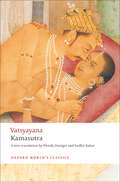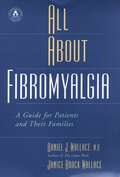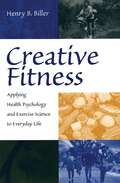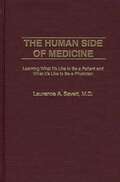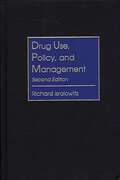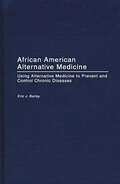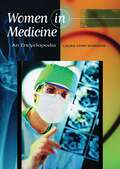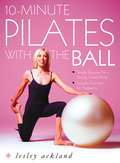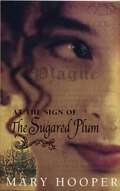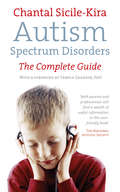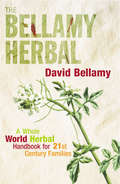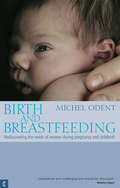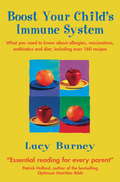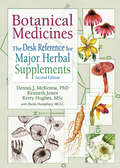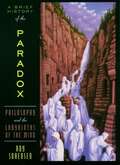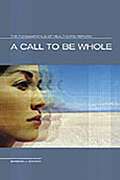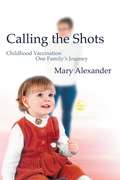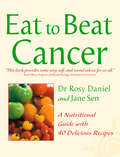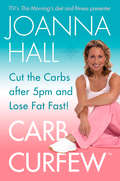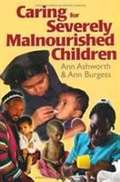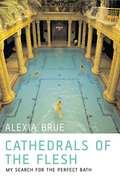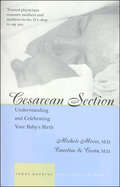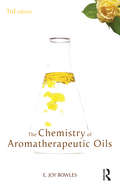- Table View
- List View
Kamasutra (Oxford World's Classics)
by Mallanaga Vatsyayana'When the wheel of sexual ecstasy is in full motion, there is no textbook at all, and no order.' The Kamasutra is the oldest extant Hindu textbook of erotic love. It is about the art of living - about finding a partner, maintaining power in a marriage, committing adultery, living as or with a courtesan, using drugs - and also about the positions in sexual intercourse. It was composed in Sanskrit, the literary language of ancient India, sometime in the third century CE. It combines an encyclopaedic coverage of all imaginable aspects of sex with a closely observed sexual psychology and a dramatic, novelistic narrative of seduction, consummation, and disentanglement. Best known in English through the highly mannered, padded, and inaccurate nineteenth-century translation of Sir Richard Burton, the text is presented here in an entirely new translation into clear, vivid, sexually frank English, together with three commentaries: translated excerpts from the earliest and most famous Sanskrit commentary (13th century) and from a twentieth-century Hindi commentary, and explanatory notes by the two translators. ABOUT THE SERIES: For over 100 years Oxford World's Classics has made available the widest range of literature from around the globe. Each affordable volume reflects Oxford's commitment to scholarship, providing the most accurate text plus a wealth of other valuable features, including expert introductions by leading authorities, helpful notes to clarify the text, up-to-date bibliographies for further study, and much more.
All About Fibromyalgia: A Guide for Patients and Their Families
by Daniel J. Wallace Janice Brock WallaceThis year, six million Americans--most of them women--will go to their doctors, complaining of an illness they have no name for. The majority will be turned away or treated for depression; the few who persist will go to an average of four doctors before they receive the correct diagnosis: fibromyalgia. In their earlier Making Sense of Fibromyalgia, noted medical writer Janice Wallace and Dr. Daniel Wallace, a leading expert on this disorder, provided a comprehensive guide--for both patients and professionals--to this little known and poorly understood syndrome. Now, in All About Fibromyalgia, the Wallaces provide a thoroughly revised and updated version of that highly successful volume, incorporating a wealth of new information. This edition provides the current understanding of the disease as well as the latest drug treatments--all laid out in clear and accessible language. As in the previous volume, the authors provide a detailed, yet clear explanation of the disease. Fibromyalgia, they explain, is a form of chronic neuromuscular pain, a pain-amplification syndrome brought on by abnormal interactions between hormones, the immune system, neurotransmitters, and the autonomic nervous system. Sometimes the syndrome occurs spontaneously; in most cases, the authors write, it is associated with trauma, stress, such conditions as lupus and hypothyroidism, and over forty microbes, from hepatitis to Epstein-Barr to Lyme disease. Drawing on actual cases to illustrate their points, the authors help break through the isolation that patients often feel when doctors misdiagnose or simply ignore their symptoms. All About Fibromyalgia addresses a desperate need for information on this disease and offers reassurance to patients and their families.
Creative Fitness: Applying Health Psychology and Exercise Science to Everyday Life
by Henry B. BillerBiller integrates research about exercise, nutrition, and health within an applied developmental psychological framework. Readers are presented with ways of making fitness an enjoyable and positive force in their daily lives. Although a major focus is on how to get in shape, Biller's primary mission is to encourage a healthy lifestyle that enriches self-awareness and personal growth. The goal is not just to facilitate physical fitness, but to enhance overall life satisfaction. The book's uniqueness, accordingly, lies in its ability to help individuals develop a creative, playful approach to fitness in all spheres of their lives.While some readers are just beginning to think about fitness because of a desire to lose weight and improve their appearance, others are more interested in refining their athletic skills or achieving a greater balance in their daily activities. Dedicated exercisers often are striving for new routines and ways to prevent burnout. Many parents, moreover, are searching for activities to help their children, as well as themselves, become more fit. Older individuals are especially likely to be concerned about staying healthy and avoiding physical dependence as they age. Biller speaks to all these concerns—and all these groups—by providing an approach to getting in shape that enriches self-understanding and mental vitality.
The Human Side of Medicine: Learning What It's Like to Be a Patient and What It's Like to Be a Physician
by Laurence A. SavettAt a time of great change in the technology and delivery of medical care, the timelessness and permanence of the non-technical aspects of medicine—the human side—are of profound value to patients and physicians alike. With more than 30 years of medical practice, teaching, advising, and mentoring medical students and undergraduates, Savett champions two premises: first, that the importance of physicians mastering the human side of medicine is as critical as learning its biology and technology; and second, that this can be taught. Attending to the human side refines diagnosis and treatment by recognizing the uniqueness of each patient's experience, and it enriches the experience for all those in the caring professions. Physicians who have always put their patients' interests first and never compromised their professional values have preserved their identity, vitality, and enthusiasm as caring doctors. This is a book about what keeps the practice of medicine stimulating: not fascinating cases, but fascinating people and relationships, the best reasons to enter medicine.Learning the human side of medicine, asserts Savett, will help attract talented and compassionate people to the field. Full of stories and lessons, ^IThe Human Side of Medicine^R is important reading for those considering a career in medicine and related professions, those already practicing—and patients.
Drug Use, Policy, and Management
by Richard IsralowitzThis new edition provides an up-to-date examination of the key issues of the drug problem, including cigarettes, heroin, alcohol, cocaine, and marijuana. It offers a current review of definitions of drug use and dependence, the latest developments regarding tobacco use and the historical agreement between government and industry, and research and analysis from a cross-cultural perspective. A detailed account of opium and heroin distribution and control in the region of Afghanistan provide valuable insight.Whether it be illegal drugs such as marijuana, heroin, and cocaine or legal substances including cigarettes and alcohol, drug use is a deeply imbedded characteristic of society. An immense amount of money and human resources is spent in the United States to address drug use. For example, the cost of substance abuse to the U.S. economy each year is estimated to be over $414 billion. In terms of illegal drugs alone, the U.S. drug market has been estimated to be $150 billion a year. The annual federal anti-drug budget for law enforcement is about $12 billion per year; and about $3 billion goes to overseas drug wars alone with about half of that amount going to Colombia to eliminate opium and coca cultivation. It has been reported that substance abuse and addiction will add at least $41 billion to the costs of elementary and secondary education for 2001 due to class disruption and violence, special education and tutoring, teacher turnover, truancy, children left behind, student assistance programs, property damage, injury, and counseling. The cost to the nation for each of its hard-core addicts, per year, is about $30,000. The amount spent on the drug problem does not include the cost of drug use measured in human suffering, increased violence, and lost lives, nor does it include the damage done by cigarettes and alcohol.The second, updated edition of this important work examines issues about the use and abuse of legal and illegal drugs from multiple perspectives including the social context of reality, historical and present patterns of use, causal factors associated with addiction, research findings including those of a cross-cultural nature, case studies of addicts, and the management of services provision.
African American Alternative Medicine: Using Alternative Medicine to Prevent and Control Chronic Diseases
by Eric J. BaileyIn order to examine the importance of alternative medicine to the African American population, this book focuses on the African American health belief system and the treatment strategies often used and documented. This book includes a cultural-historical view of alternative medicine's use within the African American community and shows how it was an integral part of African American culture.The author highlights a number of studies that examine alternative and complementary therapies associated with specific diseases among African Americans. Case studies are presented to show the types of alternative and complementary medicines used for specific diseases and to determine whether the alternative and complementary therapy was effective or not. Moreover, the cultural perceptions of the specific disease are presented to provide reasons why African Americans tend to use the particular alternative and complementary medical therapy for the disease. The book serves as a resource guide for students, healthcare professionals, researchers, policymakers, and the general public.
Women in Medicine: An Encyclopedia
by Laura WindsorThe definitive compilation of the inspiring and educational stories of women in medicine through the ages and around the world.Women in Medicine: An Encyclopedia tells the hidden history of healing practitioners. Since ancient times, and in every human society, women have played a critical, if unheralded, role in the practice and progress of the medical arts and sciences. From the 11th century German nun Hildegarde of Bingen to early 20th century radiology pioneer Marie Curie to controversial Surgeon General Jocelyn Elders, Women in Medicine portrays the struggles, the skills, the science, and the inspiring stories of more than 200 of history's great women physicians and medical researchers.Not just a biographical compendium, Women in Medicine also includes entries on the key universities, institutes, and foundations of this illustrious history. Chock full of unique illustrations and complete with extensive bibliography and index, this one volume encyclopedia is the most comprehensive and accessible reference work on the history of women in medicine. A must buy for any library looking to round out its women's history or history of science reference shelf.
10-Minute Pilates with the Ball: Simple Routines For A Strong, Toned Body - Includes Exercises For Pregnancy
by Lesley AcklandEasy-to-follow 10 minute routines using the Pilates exercise ball to enhance your Pilates workout, from the bestselling Lesley Ackland. Used by Olympic coaches, ballet dancers and athletes to achieve optimal performance, this safe and effective exercise regime is also suitable for anyone wanting to get fit and toned, as well as pregnant women.
At the Sign Of the Sugared Plum
by Mary Hooper'You be going to live in the city, Hannah?' Farmer Price asked, pushing his battered hat up over his forehead. 'Wouldn''t think you'd want to go there . . . Times like this, I would have thought your sister would try and keep you away.' Hannah is oblivious to Farmer Price's dark words, excited as she is about her first ever trip to London to help her sister in her shop 'The Sugared Plum', making sweetmeats for the gentry. Hannah does not however get the reception she expected from her sister Sarah. Instead of giving Hannah a hearty welcome, Sarah is horrified that Hannah did not get her message to stay away - the Plague is taking hold of London. Based on much research, Mary Hooper tellingly conveys how the atmosphere in London changes from a disbelief that the Plague is anything serious, to the full-blown horror of the death carts and being locked up - in effect to die - if your house is suspected of infection.
Autism Spectrum Disorders: The Complete Guide
by Chantal Sicile-KiraThe National Autistic Society estimates that Autism Spectrum Disorders (ASD) now affects 500,000 families in the UK alone, while one in 86 children have an ASD-related special educational need. Autism Spectrum Disorders is an essential one-stop reference guide introducing the reader to an understanding of this complex disorder, touching on all aspects related to ASD (including Asperger's Syndrome), with a detailed resource section for those wanting more in-depth information on specific areas. The book is invaluable not only for parents and professionals who work with children but also for potential employees and anyone who works in the public sphere. With chapters on the causes of ASD, diagnosis, treatment and diet, this is a uniquely accessible guide providing practical information in a clear and concise manner.'Given autism's high-profile media, Chantal Sicile-Kira's book could not be more timely. This will be one of those smart, authoritative, user-friendly guides which will be the essential volume that both parents, health professionals and a wide general readership will reach for in order to fathom this confounding condition' Douglas Kennedy
The Bellamy Herbal: A Whole World Herbal Handbook For 21st Century Families
by David BellamyAt a time when health scares abound, new drugs and medical treatments are continually emerging and we are forced to be ever-more cautious as to the foods we eat, people are increasingly looking for alternative ways of treating and restoring their health. The healing properties of plants has long been recognised, but knowing exactly what we should be giving our families and how this 'alternative' medicine can work safely alongside modern treatments can seem rather less straightforward. David Bellamy - Britain's favourite botanist - here draws on his many years of research and teaching to give us a practical, accessible and comprehensive guide to herbalism, showing how we can all use herbs to strengthen our immune system, boost energy levels and treat conditions ranging from the common cold to digestive disorders, arthritis and heart disease. Bellamy's Herbal is an easy to follow, detailed guide to everything you need to know about herbal remedies and supplements and how they can be used to treat you and your family safely and effectively.
Birth and Breastfeeding: Rediscovering the Needs of Women During Pregnancy and Childbirth
by Michel OdentHumanity, argues Michel Odent, stands at a crossroads in the history of childbirth - and the direction we choose to take will have critical consequences. Until recently a woman could not have had a baby without releasing a complex cocktail of ‘love hormones’. In many societies today, most women give birth without relying on the release of such a flow of hormones. Some give birth via caesarean section, while others use drugs that not only block the release of these natural substances, but do not have their beneficial behavioural effects. ‘This unprecedented situation must be considered in terms of civilization’, says Odent, and gives us urgent new reasons to rediscover the basic needs of women in labour.At a time when pleas for the ‘humanization’ of childbirth are fashionable, the author suggests, rather, that we should first accept our ‘mammalian’ condition and give priority to the woman’s need for privacy and to feel secure. The activity of the intellect, the use of language, and many cultural beliefs and rituals - which are all special to humans - are handicaps in the period surrounding birth. Says Odent: ‘To give birth to her baby, the mother needs privacy. She needs to feel unobserved. The newborn baby needs the skin of the mother, the smell of the mother, her breast. These are all needs that we hold in common with the other mammals, but which humans have learned to neglect, to ignore or even deny.”Expectant parents, midwives, doulas, childbirth educators, those involved in public health, and all those interested in the future of humanity, will find this a provocative and visionary book.
Boost Your Child's Immune System: What you need to know about allergies, vaccinations, antibiotics and diet, including over 160 recipes (Tom Thorne Novels #319)
by Lucy BurneyHealthy children need healthy immune systems, to fight off bugs and infections they can pick up at school. The most effective way to strengthen your child's immune system is through a healthy diet. With suggestions to suit children from 0-18, top nutritionist Lucy Burney shows you how. Discover: The importance of good nutrition; The immune-boosting diet for all children, from babies to teenagers; The pros and cons of vaccinations for kids; The latest research on food allergies - and how to avoid them; How to fight infections naturally, and avoid antibiotics; Tips on food storage and preparation, to avoid bugs and preserve nutrients; Easy-to-follow menu plans and over 160 easy-to-make recipes that all your family will love
Botanical Medicines: The Desk Reference for Major Herbal Supplements, Second Edition
by Dennis J Mckenna Kenneth Jones Kerry Hughes Virginia M TylerAnswer patients’questions about botanical supplements quickly and easily!This informative book is a compendium of detailed scientific research on 34 of the most popular dietary supplements used in North America and Europe. Its coverage of pharmacological studies on the main medicinal plants used in clinical practice and sold in pharmacies in the Western world is more extensive than any other publication of monographic reviews available. The way Botanical Medicines: The Desk Reference for Major Herbal Supplements, Second Edition. is organized (standardized topic formats are used in each monograph) makes it easy for you to locate relevant information quickly and to compare corresponding sections between different entries. This book is an invaluable tool for pharmacists, physicians, and other health care professionals who need detailed, scientifically accurate information on appropriate use, safety, dosages, and similar issues related to botanical dietary supplements.Each entry in Botanical Medicines: The Desk Reference for Major Herbal Supplements, Second Edition. covers botanical data (classification and nomenclature, common names, geographic occurrence, and botanical characteristics), plus: history and traditional uses chemistry therapeutic applications pre-clinical studies clinical studies recommended dosages safety profiles (including toxicology) side effects and contraindications drug interactions and special precautions safety recommendations during pregnancy and lactationThis extensively referenced volume includes appendixes with information on the major provisions of DSHEA (the Dietary Supplement Health and Education Act of 1994) and on the criteria and procedures for assessing the quality of botanical products.
Botanical Medicines: The Desk Reference for Major Herbal Supplements, Second Edition
by Dennis J Mckenna Kenneth Jones Kerry Hughes Virginia M TylerAnswer patients’questions about botanical supplements quickly and easily!This informative book is a compendium of detailed scientific research on 34 of the most popular dietary supplements used in North America and Europe. Its coverage of pharmacological studies on the main medicinal plants used in clinical practice and sold in pharmacies in the Western world is more extensive than any other publication of monographic reviews available. The way Botanical Medicines: The Desk Reference for Major Herbal Supplements, Second Edition. is organized (standardized topic formats are used in each monograph) makes it easy for you to locate relevant information quickly and to compare corresponding sections between different entries. This book is an invaluable tool for pharmacists, physicians, and other health care professionals who need detailed, scientifically accurate information on appropriate use, safety, dosages, and similar issues related to botanical dietary supplements.Each entry in Botanical Medicines: The Desk Reference for Major Herbal Supplements, Second Edition. covers botanical data (classification and nomenclature, common names, geographic occurrence, and botanical characteristics), plus: history and traditional uses chemistry therapeutic applications pre-clinical studies clinical studies recommended dosages safety profiles (including toxicology) side effects and contraindications drug interactions and special precautions safety recommendations during pregnancy and lactationThis extensively referenced volume includes appendixes with information on the major provisions of DSHEA (the Dietary Supplement Health and Education Act of 1994) and on the criteria and procedures for assessing the quality of botanical products.
A Brief History of the Paradox: Philosophy and the Labyrinths of the Mind
by Roy SorensenCan God create a stone too heavy for him to lift? Can time have a beginning? Which came first, the chicken or the egg? Riddles, paradoxes, conundrums--for millennia the human mind has found such knotty logical problems both perplexing and irresistible. Now Roy Sorensen offers the first narrative history of paradoxes, a fascinating and eye-opening account that extends from the ancient Greeks, through the Middle Ages, the Enlightenment, and into the twentieth century. When Augustine asked what God was doing before He made the world, he was told: "Preparing hell for people who ask questions like that." A Brief History of the Paradox takes a close look at "questions like that" and the philosophers who have asked them, beginning with the folk riddles that inspired Anaximander to erect the first metaphysical system and ending with such thinkers as Lewis Carroll, Ludwig Wittgenstein, and W.V. Quine. Organized chronologically, the book is divided into twenty-four chapters, each of which pairs a philosopher with a major paradox, allowing for extended consideration and putting a human face on the strategies that have been taken toward these puzzles. Readers get to follow the minds of Zeno, Socrates, Aquinas, Ockham, Pascal, Kant, Hegel, and many other major philosophers deep inside the tangles of paradox, looking for, and sometimes finding, a way out. Filled with illuminating anecdotes and vividly written, A Brief History of the Paradox will appeal to anyone who finds trying to answer unanswerable questions a paradoxically pleasant endeavor.
A Call to Be Whole: The Fundamentals of Health Care Reform (Non-ser.)
by Barbara J. SowadaExamines the complex interrelationships that inform the health care system. Health care, like all social systems, is a product of thought. Up to now, our collective thinking has been based on trying to manage parts, not the whole. This book inquires into four age-old questions that shape all health care systems: What is health? What is care? Who is responsible? How much is enough?Americans have the wealthiest health care system in the world, yet the health status of Americans ranks in the lowest quartile among the world's 25 industrialized nations and 45 million Americans are without health insurance. Today's cost, quality, and access problems are inter-related and can be traced to taken-for-granted assumptions and health care's outmoded organizing concepts: reductionism and materialism. Greater fragmentation of care, an over-dependence on technology, inattention to social and environmental determinants of health, and serious economic and moral dilemmas are some of the results of the last 40 years of piecemeal political and economic reform.This book has three purposes. The first is to help the reader see healthcare as a complex system—a part in a larger whole—and to show how answers to the questions, What is health? What is care? Who is responsible? How much is enough? implicitly define the purpose, effectiveness, efficiency, and fairness of a health care system. The second is to show that today's access, cost, and quality problems are interrelated, and arise from outmoded concepts, unquestioned assumptions, and a long trail of inconsistent and contradictory answers to the four questions. The third purpose is to acquaint readers with both the personal and societal challenges of finding coherent answers to the four questions raised above and to describe some of the budding experimental solutions that challenge traditional conventions and assumptions.
Calling the Shots: Childhood Vaccination – One Family's Journey (PDF)
by Mary AlexanderMary Alexander's daughter Florence was a healthy two-year-old until 36 hours after her Meningitis C vaccination, when she suffered the first of many terrifying convulsions. Here, mixing personal experience with factual research, Alexander examines the status quo of vaccination and highlights some of the questions she believes should be at the forefront of parents' minds: how can trust in vaccination be restored?; are parents' expectations of success too high in this medically advanced world?; are all vaccinations necessary? This book aims to provide parents with the knowledge and curiosity needed to make an informed, confident decision about vaccination.
Cancer: A Nutritional Guide With 40 Delicious Recipes (Eat to Beat)
by Dr. Rosy Daniel Jane SenA book for cancer sufferers and those wishing to prevent it, written by the Medical Director and the Nutritional Advisor to the famous Bristol Cancer Help Centre
Carb Curfew: Cut The Carbs After 5pm And Lose Fat Fast!
by Joanna HallJoanna Hall, the popular diet and fitness presenter for ITV’s This Morning show, reveals her simple 5 step fat loss plan. The golden rule is ‘no carbs after 5pm’ – and with Joanna Hall’s help the rest is easy!
Caring For Severely Malnourished Children (PDF)
by Ann Ashworth Ann BurgessMany malnourished children still die unnecessarily due to inadequate inpatient care. This book describes the ten treatment steps needed to manage these children successfully. It is based on guidelines developed by the World Health Organization and on training modules prepared for nurses in Africa.
Cathedrals of the Flesh: My Search for the Perfect Bath
by Alexia BruePeople journey to Greece for the ruins, Turkey for the Hagia Sophia, and Russia for St. Peter's, but Alexia Brue travels with a different itinerary: to visit the baths. What starts off as an innocent vacation quickly becomes an obsession, as the author ventures to Turkey, Greece, Russia, Finland, and Japan to sample the range of bathing traditions the world has to offer. Caught up in the tide of travel and exploration and crossing paths with fellow travellers along the way, Alexia drifts further and further away from the life she left behind in New York City. Hoping to find a thriving local bath scene, she dips into hamams, banyas, saunas, and onsen, finding both disappointment and bliss. At once deeply personal and highly informative, full of intimacies, discoveries, and unexpected twists, CATHEDRALS OF THE FLESH is the candid and playful account of one woman's determination to follow her passion, ultimately inspiring readers to do the same.
Cesarean Section: Understanding and Celebrating Your Baby's Birth (A Johns Hopkins Press Health Book)
by Michele C. Moore Caroline M. de CostaOne in four babies born in the United States and Europe comes into the world via Cesarean section. Yet this procedure has been described by critics as an unnecessary and potentially dangerous medical intervention. Consequently, expectant mothers often fear this option, and women who have had C-sections can feel a sense of failure.In Cesarean Section: Understanding and Celebrating Your Baby's Birth, Drs. Michele Moore and Caroline de Costa emphasize the joy of delivering a healthy baby, however that is best achieved. They explain why Cesarean births are sometimes preferable to vaginal delivery for both mother and baby, and they help women understand the issues behind the decision to perform the procedure. From anesthesia, surgery, and recovery through at-home care of mother and child, the authors offer reassurance and practical information for all mothers and mothers-to-be. They also discuss the latest findings on postpartum depression and planning for future births, including the possibility of vaginal birth after a Cesarean section.For every woman who has a planned—or unplanned—Cesarean section, this book provides the information they need to alleviate their fears and come to value this delivery option."Because up to a quarter of all births are Cesarean births, prenatal preparation should include information about Cesarean sections for every woman. And that is why we have written this guide.... We believe strongly that it is time to speak out and say that Cesarean section is a normal birth method and that women who have a Cesarean section should not be made to feel that they have failed.... We hope you find the information in this book useful and helpful in thinking about C-section, whether you have already had a Cesarean and want to understand the experience better, you wish to plan for another C-section birth, or you are expecting a baby and want to be informed about all the possibilities ahead, including this other normal way of bringing a baby into the world."—from the Introduction
Chemistry of Aromatherapeutic Oils
by E Joy BowlesThe Chemistry of Aromatherapeutic Oils offers a practical approach to understanding the chemical functional groups and pharmacological actions of essential oils.Incorporating up to date research findings, The Chemistry of Aromatherapeutic Oils takes you, step by step, through the fundamental chemistry of aromatherapy and explains the powerful effects of essential oils on the body at a molecular level.Including:* Useful chemical diagrams and easy to follow explanations* Essential oil extraction methods and techniques for quality control* Reference charts of the effects of essential oils on pharmacological targets and the major compounds of 89 essential oilsThis book helps to make sense of the chemistry of aromatherapy for those who need to understand the science and efficacy of this healing art. Ideal for students and practitioners of holistic therapies, this book will also appeal to nurses, doctors, pharmacists and other allied health practitioners.
Chemistry of Aromatherapeutic Oils
by E Joy BowlesThe Chemistry of Aromatherapeutic Oils offers a practical approach to understanding the chemical functional groups and pharmacological actions of essential oils.Incorporating up to date research findings, The Chemistry of Aromatherapeutic Oils takes you, step by step, through the fundamental chemistry of aromatherapy and explains the powerful effects of essential oils on the body at a molecular level.Including:* Useful chemical diagrams and easy to follow explanations* Essential oil extraction methods and techniques for quality control* Reference charts of the effects of essential oils on pharmacological targets and the major compounds of 89 essential oilsThis book helps to make sense of the chemistry of aromatherapy for those who need to understand the science and efficacy of this healing art. Ideal for students and practitioners of holistic therapies, this book will also appeal to nurses, doctors, pharmacists and other allied health practitioners.
